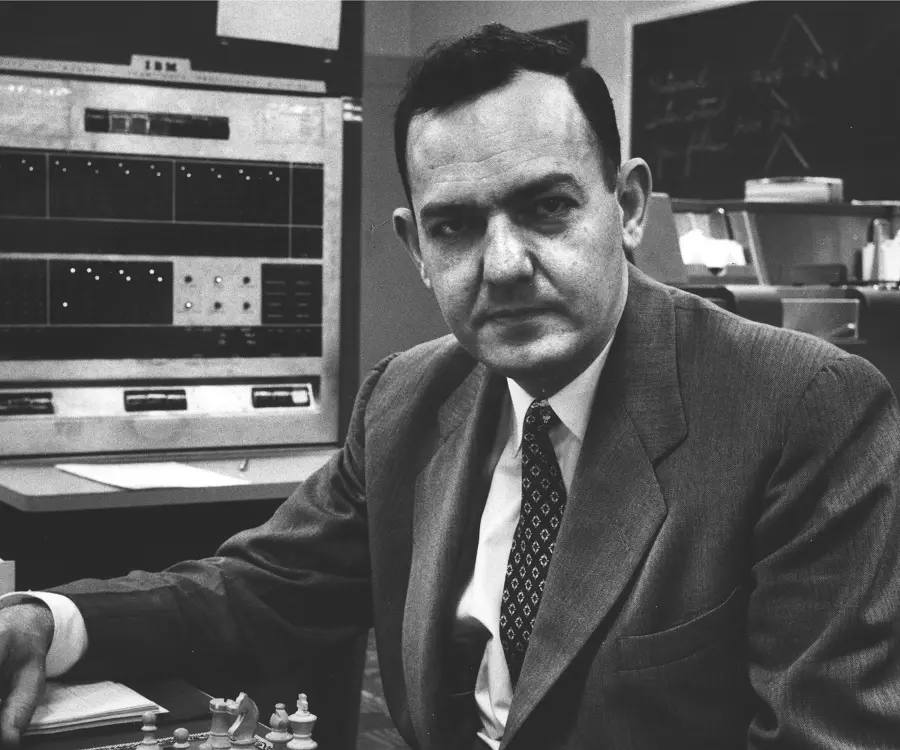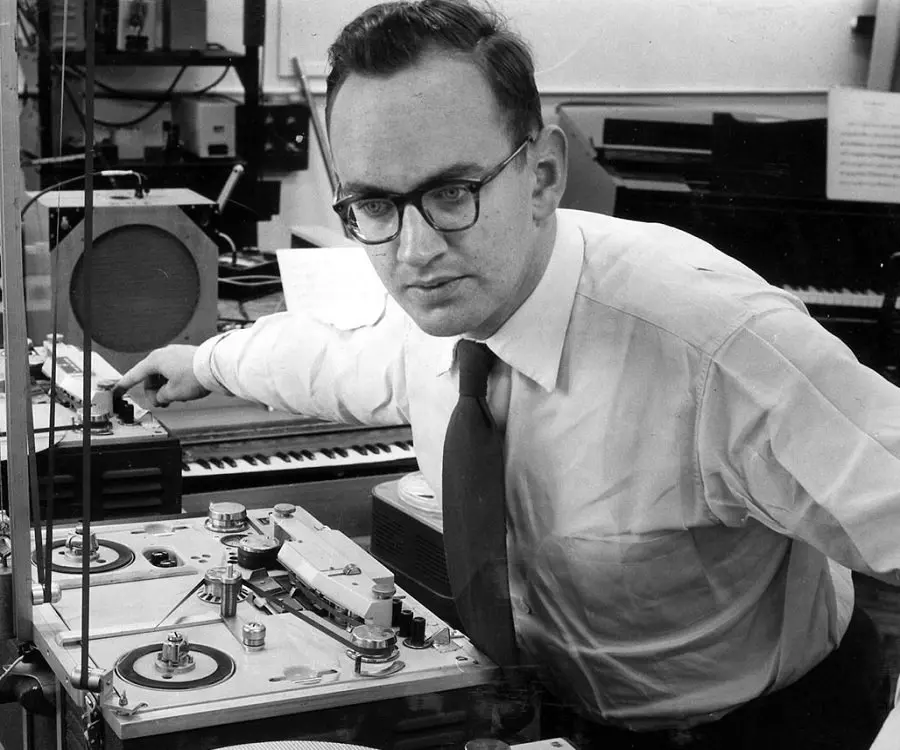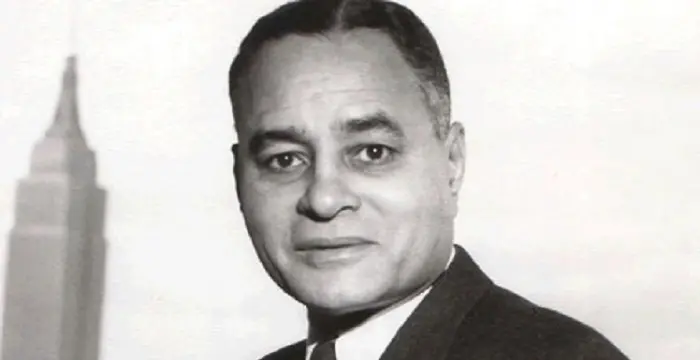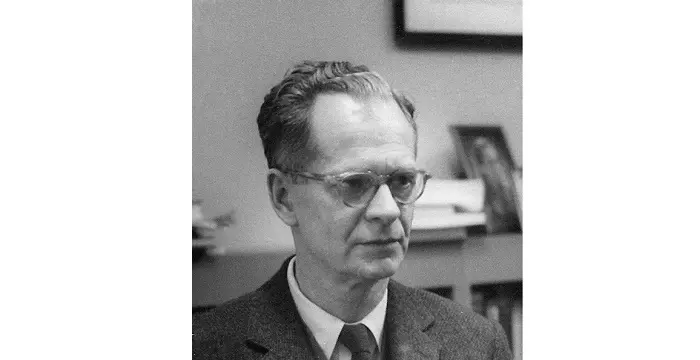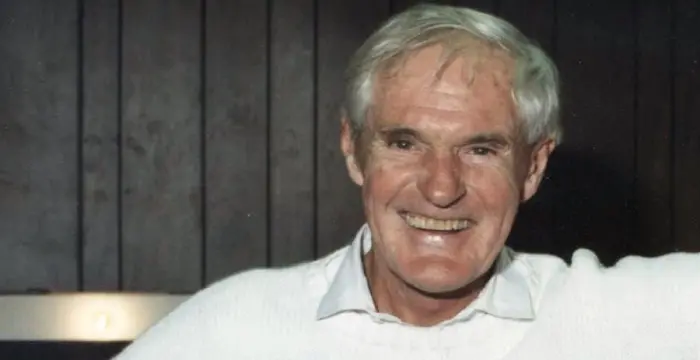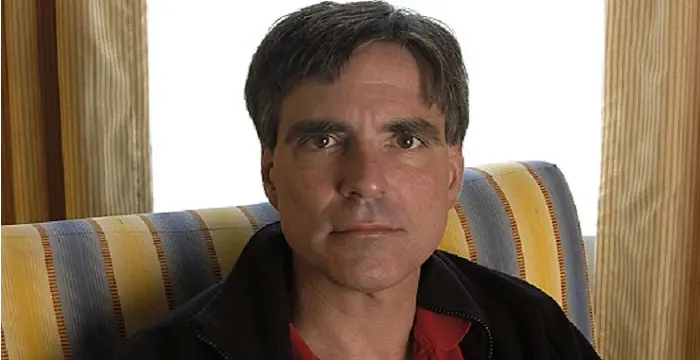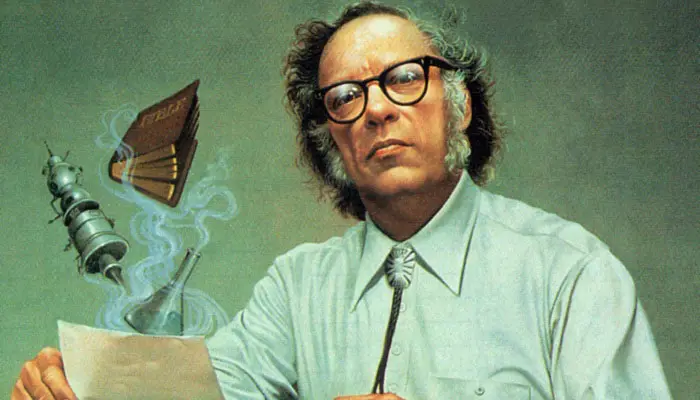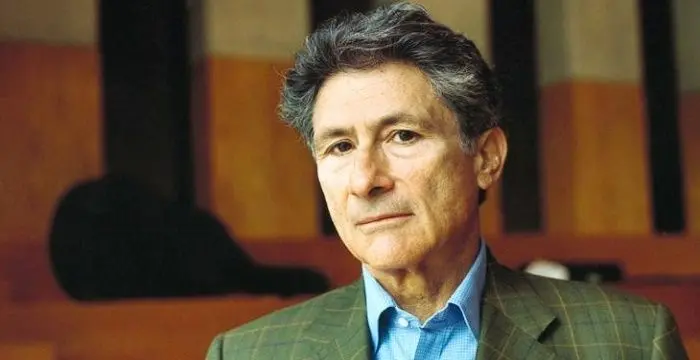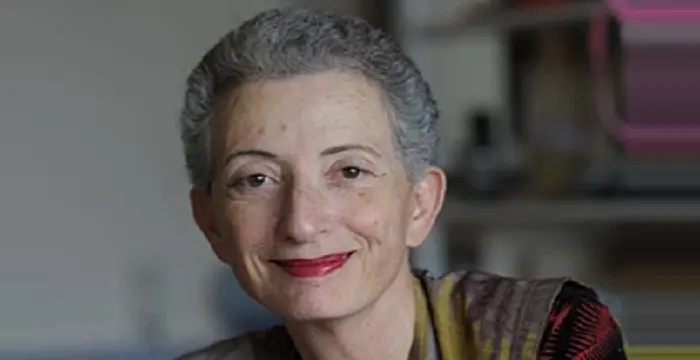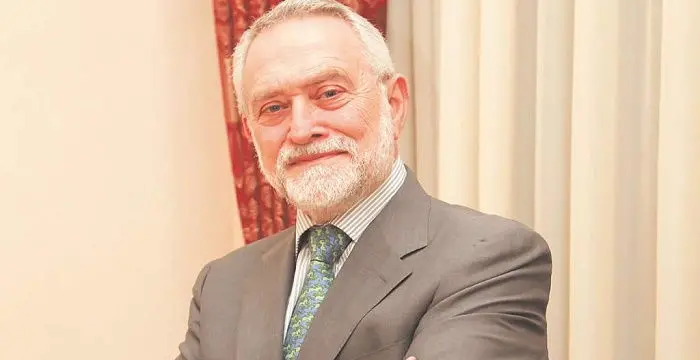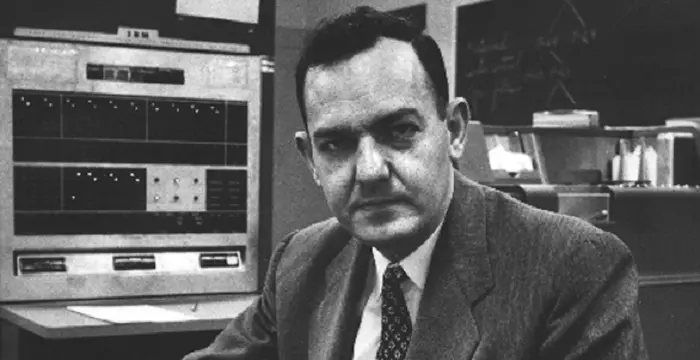
Herbert Simon - Professor, Life Achievements and Personal Life
Herbert Simon's Personal Details
Herbert Simon was an American political scientist, economist, sociologist, psychologist, and computer scientist
| Information | Detail |
|---|---|
| Birthday | June 15, 1916 |
| Died on | February 9, 2001 |
| Nationality | American |
| Famous | University Of Chicago, Intellectuals & Academics, Economists, Political Scientists, Professor, Psychologists, Sociologists |
| Spouses | Dorothea Pye |
| Universities |
|
| Notable Alumnis |
|
| Discoveries / Inventions |
|
| Birth Place | Milwaukee |
| Gender | Male |
| Father | Arthur Simon |
| Mother | Edna Marguerite Merkel |
| Sun Sign | Gemini |
| Born in | Milwaukee |
| Famous as | Economist, Political scientist, sociologist, psychologist, and professor |
| Died at Age | 84 |
// Famous Sociologists
Emile Durkheim
Émile Durkheim was a famous French philosopher and sociologist. This biography profiles his childhood, career, works, achievements, trivia and timeline.
Herbert Simon's photo
Who is Herbert Simon?
Herbert Alexander Simon was one of the twentieth century’s most influential social scientists and a Nobel Laureate. Born in the United States of America to a German emigrant father, he completed his schooling under public school system in Milwaukee, Wisconsin. Thereafter, he entered the University of Chicago with the aim of becoming a mathematical social scientist and earned both his B.A. and Ph.D. degrees in political science from there. Beginning his career as a research assistant in municipal administration, he soon became the director of a similar research group at the University of California, Berkeley and then a faculty member at the Illinois Institute of Technology, Chicago. However, he spent the major part of his career at the Carnegie Institute of Technology, now Carnegie Mellon University. Joining as a professor of administration and psychology, he later became the Richard King Mellon University Professor of Computer Science and Psychology there. Although he worked in various disciplines, he is best known for his work on the theory of corporate decision making. He also contributed significantly to the research on artificial intelligence. Recipient of a number of awards, he was actually a political scientist, economist, sociologist, psychologist, and computer scientist all rolled into one.
// Famous Political Scientists
Ralph Bunche
Ralph Bunche was an American political scientist and diplomat who received the 1950 Nobel Peace Prize for his work in Palestine. Check out this biography to know about his childhood, family life, achievements and other facts related to his life.
Childhood & Early Life
Herbert Alexander Simon was born in Milwaukee, Wisconsin on June 15, 1916. His father, Arthur Simon, migrated from Germany after earning his degree in electrical engineering. He was also an inventor and held several dozen patents. Later he became an independent patent attorney.
Herbert’s mother, Edna Marguerite Merkel, was an accomplished pianist. She was a third generation American having her roots in Prague and Köln. He had an elder brother, five year senior to him.
Herbert had his early education at the public elementary and high school in Milwaukee, which in his own words, provided “excellent general education”. At home too, his parents nurtured in him an early interest in books and music. The public library at Milwaukee also sustained his interest in various subjects.
However, the most important factor that provided him with a direction was his maternal uncle, Harold Merkel, a student of economics and a great debater. Although he died early, his memory was always alive in the family and his books on economics and psychology were preserved with care.
Over time, Harold Merkel not only became a role model for young Herbert Simon, but also inspired him to be a good debater. In order to defend unpopular topics like free trade and single tax, he began reading his uncle’s books. He thus began to grow an interest in social science and economics.
In 1933, Simon entered the University of Chicago and intending to become a mathematical social scientist, took up political science, economics and mathematics. Subsequently, he graduated with a B.A. degree in political science in 1936.
In the same year, he received a research assistantship in the field of municipal administration with Clarence E. Ridley. In 1939, after three years of operational research in this field, he became the director of a research group working in the same field at the University of California, Berkeley.
Around this time he also decided to start working for his doctorate. Since he was working at Berkeley, he now made special arrangement with the University of Chicago and took his doctoral exams by mail. His dissertation was on administrative decision-makingand he received his Ph.D. from Chicago University in 1943.
Career
Meanwhile in 1942, as the research grant at Berkeley was exhausted, Simon joined the political science department of Illinois Institute of Technology in Chicago as a faculty member, remaining there till 1949. During this period, he met many well-known economists, especially the staff of the Cowles Commission for Research in Economics.
At that time, the Commission was located inside the University of Chicago and its staff members used to hold regular seminars. Simon now began to participate in those seminars and thus he began to study economics once again, this time going deeper into the subject.
In 1943, he published his first paper on tax incidence. Thereafter in 1947, he published the first edition of his famous book ‘Administrative Behavior: a Study of Decision-Making Processes in Administrative Organization’; a work that he kept on updating throughout his life.
Sometime now, he was also co-opted by Jacob Marschak to assist him in his work on the prospective economic effects of atomic energy. He was in charge of the macroeconomic parts of that study and in spite of his earlier publications he believed this work to be his actual initiation into analytical economics.
In 1948, he received a public assignment and played an important role in the creation of the Economic Cooperation Administration. The agency was designed to administer the Marshall Plan aid for the U.S. Government.
In 1949, he joined the newly-founded Graduate School of Industrial Administration at Carnegie Institute of Technology as a professor of administration and chairman of Department of Industrial Management. Here, he worked with others to put business education on a more stable ground by incorporating in it economics and behavioral sciences.
Concurrently, from 1950 to 1955, Simon worked with various scholars, the most significant of them being David Hawkins. They worked together to propound as well as prove the Hawkins-Simon Theorem. His work with Albert Ando on near-decomposability and aggregation was another important achievement of this period.
During this period, he also realized that it would be easier to study problem-solving if it was simulated with computer programs. Therefore sometime in 1954, he started working on computer simulation of human cognition.
Eventually Simon also began to take interest in artificial intelligence and started some pioneering works in this field. In 1956, he worked with Allen Newell and Cliff Shaw to develop the Information Processing Language (IPL) and later in the same year, using the IPL, Simon and Newell created the Logic Theory Machine.
In 1957, Simon created General Problem Solver program, known as GPS, using the same IPL. In the same year, he predicted that computer chess would outdo human chess within ten years; however, in reality it took forty years to take it to that level.
In 1963, he wrote a paper on emotional cognition in response to psychologist Ulric Neisser's assertion that machines can never produce ‘hot cognition’ behavior such as pain and pleasure. He updated the paper in 1967 and published it in ‘Psychological Review.
From 1968 to 1972, he was a member of the President's Science Advisory Committee. During this period, he along with others, studied environmental protection policies, from which he tried to gain new research ideas.
Simon remained with Carnegie Mellon University till 2001. Although he had joined the university as professor of administration, because of his interdisciplinary approach, he was later affiliated with the departments of Psychology, Philosophy, and Social and Decision Sciences, as well as with the School of Computer Science and the Tepper School of Business.
Simon was a prolific writer and wrote over a thousand highly cited papers. In addition, he had penned down 27 books, which have been greatly acclaimed by scholars.
Contribution To Economics
Simon’s biggest contribution to the field of economics was the concept of behavioral decision-making. His pioneering research in the area was inspired by his doctoral dissertation on the decision-making processes, which was later released as a book named “Administrative Behavior”. The book dealt with the behavioral and cognitive processes of making decisions. According to him, a decision should be correct and efficient and must be practical enough to be implemented and any decision that involves alternative should be towards an organizational goal. The task of decision-making is to select the alternative results in the more preferred set of all the possible consequences.The key to this work is the idea that human decision making results in satisficing than optimizing. According to Simon’s approach, the entrepreneur is substituted by a configuration of decision makers whose intellect is limited and cooperates to get the right solution for the troubles they would confront. In reality, people in large organizations cannot put all these into action for obtaining rational decisions. Due to the limitation of uncertainty of the future and the ability to process information, people ‘satisifice’ to result in satisfactory outcomes. People in the organization usually come up with decisions for certain goals, which are adjusted when the results do not match. In his book, he rejected the idea of ‘economic man’ who optimizes rather than introducing the concept of a businessman who satisfices.
Contribution To Artificial Intelligence
Simon was one of the first ones to explore the realms of artificial intelligence, and together with Allen Newell came up with the Logic Theory Machine (1956) and the General Problem Solver (GPS) (1957) programs. GPS is believed to be the first method of distinguishing problem solving scheme from information about particular issues. Both the above programs were developed using the Information Processing Language by Newell, Simon and Cliff Shaw. In 1960s, Simon wrote a paper reacting to a claim by the psychologist Ulric Neisser who stated that machines may duplicate processes like reasoning, planning, deciding but cannot replicate processes like desiring, having emotions etc. His paper was then published in the year 1967, which was ignored by the AI research community for years but later became extremely influential. Simon also teamed up with James G. March on several works in organization theory. Along with Newell, Simon came up with a possibility for the simulation of human problem solving behavior using the production rules. He paired up with Anders Ericsson Simon to develop verbal protocol analysis. Apart from this, Simon wanted to know how humans learn and with Edward Feigenbaum he formulated the Elementary Perceiver and Memorizer theory — one of the first theories of learning as a computer program. This EPAM served as a means to explain a large number of phenomena in the realms of verbal learning.
Major Works
Simon is best remembered for his book ’Administrative Behavior: a Study of Decision-Making Processes in Administrative Organization’. First published in 1947, it laid down the foundation for a novel economic intellectual movement called the Carnegie School. The book was later updated several times and republished in 1957, 1976 and 1997.
Awards & Achievements
In 1969, Simon received Distinguished Scientific Contribution Award of the American Psychological Association for his excellence in cognitive psychology.
He was honored with the A.M. Turing Award for his work in computer science in 1975.
In 1978, Herbert Simon received the Sveriges Riksbank Prize in Economic Sciences in Memory of Alfred Nobel "for his pioneering research into the decision-making process within economic organizations."
He was awarded with the National Medal of Science in 1986.
In 1993, he received the American Psychological Association Award for Outstanding Lifetime Contributions to Psychology.
Personal Life & Legacy
On 25 December 1937, Simon married Dorothea Isabel Pye. The marriage lasted until his death in 2001. In their long married life, lasting 63 years, they shared a wide range of interests and had co-published several papers in public administration and cognitive psychology. They had three children; Katherine, Peter, Barbara.
Simon was diagnosed with a cancerous tumor in his abdomen. In January 2001, he underwent surgery to remove the tumor at UPMC Presbyterian. Although the surgery was successful it gave rise to some complications and he died on February 9, 2001.
Today he is remembered as one of the founding fathers of many scientific domains such as decision-making, problem-solving, artificial intelligence and information processing.
// Famous Psychologists
B. F. Skinner
B.F. Skinner, the inventor of the operant conditioning chamber, was one of the most influential psychologists of the 20th century. This biography of B.F. Skinner provides detailed information about his childhood, life, achievements, works & timeline.
Joyce Brothers
Joyce Brothers was one of the most prominent psychologists and a television personality. Explore this biography to learn more about her childhood, work, achievements, life and timeline.
Timothy Francis Leary
Timothy Leary was a psychologist and lecturer who advocated the use of LSD. This biography of Timothy Leary provides detailed information about his childhood, life, achievements, works & timeline.
Herbert Simon's awards
| Year | Name | Award |
|---|---|---|
Other | ||
| 0 | 1975 - Turing Award | |
| 0 | 1978 - Nobel Prize in Economics | |
Herbert Simon biography timelines
- // 15th Jun 1916Herbert Alexander Simon was born in Milwaukee, Wisconsin on June 15, 1916. His father, Arthur Simon, migrated from Germany after earning his degree in electrical engineering. He was also an inventor and held several dozen patents. Later he became an independent patent attorney.
- // 1933In 1933, Simon entered the University of Chicago and intending to become a mathematical social scientist, took up political science, economics and mathematics. Subsequently, he graduated with a B.A. degree in political science in 1936.
- // 25th Dec 1937On 25 December 1937, Simon married Dorothea Isabel Pye. The marriage lasted until his death in 2001. In their long married life, lasting 63 years, they shared a wide range of interests and had co-published several papers in public administration and cognitive psychology. They had three children; Katherine, Peter, Barbara.
- // 1939In the same year, he received a research assistantship in the field of municipal administration with Clarence E. Ridley. In 1939, after three years of operational research in this field, he became the director of a research group working in the same field at the University of California, Berkeley.
- // 1942 To 1949Meanwhile in 1942, as the research grant at Berkeley was exhausted, Simon joined the political science department of Illinois Institute of Technology in Chicago as a faculty member, remaining there till 1949. During this period, he met many well-known economists, especially the staff of the Cowles Commission for Research in Economics.
- // 1943Around this time he also decided to start working for his doctorate. Since he was working at Berkeley, he now made special arrangement with the University of Chicago and took his doctoral exams by mail. His dissertation was on administrative decision-makingand he received his Ph.D. from Chicago University in 1943.
- // 1943 To 1947In 1943, he published his first paper on tax incidence. Thereafter in 1947, he published the first edition of his famous book ‘Administrative Behavior: a Study of Decision-Making Processes in Administrative Organization’; a work that he kept on updating throughout his life.
- // 1948In 1948, he received a public assignment and played an important role in the creation of the Economic Cooperation Administration. The agency was designed to administer the Marshall Plan aid for the U.S. Government.
- // 1950 To 1955Concurrently, from 1950 to 1955, Simon worked with various scholars, the most significant of them being David Hawkins. They worked together to propound as well as prove the Hawkins-Simon Theorem. His work with Albert Ando on near-decomposability and aggregation was another important achievement of this period.
- // 1954During this period, he also realized that it would be easier to study problem-solving if it was simulated with computer programs. Therefore sometime in 1954, he started working on computer simulation of human cognition.
- // 1957In 1957, Simon created General Problem Solver program, known as GPS, using the same IPL. In the same year, he predicted that computer chess would outdo human chess within ten years; however, in reality it took forty years to take it to that level.
- // 1957 To 1997Simon is best remembered for his book ’Administrative Behavior: a Study of Decision-Making Processes in Administrative Organization’. First published in 1947, it laid down the foundation for a novel economic intellectual movement called the Carnegie School. The book was later updated several times and republished in 1957, 1976 and 1997.
- // 1963In 1963, he wrote a paper on emotional cognition in response to psychologist Ulric Neisser's assertion that machines can never produce ‘hot cognition’ behavior such as pain and pleasure. He updated the paper in 1967 and published it in ‘Psychological Review.
- // 1968 To 1972From 1968 to 1972, he was a member of the President's Science Advisory Committee. During this period, he along with others, studied environmental protection policies, from which he tried to gain new research ideas.
- // 1969In 1969, Simon received Distinguished Scientific Contribution Award of the American Psychological Association for his excellence in cognitive psychology.
- // 1975He was honored with the A.M. Turing Award for his work in computer science in 1975.
- // 1978In 1978, Herbert Simon received the Sveriges Riksbank Prize in Economic Sciences in Memory of Alfred Nobel "for his pioneering research into the decision-making process within economic organizations."
- // 1986He was awarded with the National Medal of Science in 1986.
- // 1993In 1993, he received the American Psychological Association Award for Outstanding Lifetime Contributions to Psychology.
- // 9th Feb 2001Simon was diagnosed with a cancerous tumor in his abdomen. In January 2001, he underwent surgery to remove the tumor at UPMC Presbyterian. Although the surgery was successful it gave rise to some complications and he died on February 9, 2001.
// Famous Professor
Temple Grandin
Temple Grandin is a well-known American writer, autistic activist and animal expert. This biography profiles her childhood, life, achievements, career and timeline
Randy Pausch
Randolph Frederick "Randy" Pausch was an American professor at Carnegie Mellon University (CMU) in Pittsburgh. Check out this biography to know about his childhood, family life, achievements and other facts about his life.
Isaac Asimov
Isaac Asimov was an American professor of biochemistry and a renowned author of science fiction and popular science books. Read this biography to know more about his life.
Edward Said
Edward Said was a Palestinian-American scholar who was a former member of the Palestinian National Council. This biography of Edward Said provides detailed information about his childhood, life, achievements, works & timeline.
Hélène Cixous
Hélène Cixous is a Jewish-French-Algerian author, famous for her feminist literary works, and her research on several eminent writers. To know more about her childhood, career, profile and timeline read on.
Salvador Moncada
Salvador Moncada is a Honduran-British pharmacologist and professor. This biography of Salvador Moncada provides detailed information about his childhood, life, achievements, works & timeline
Herbert Simon's FAQ
What is Herbert Simon birthday?
Herbert Simon was born at 1916-06-15
When was Herbert Simon died?
Herbert Simon was died at 2001-02-09
Where was Herbert Simon died?
Herbert Simon was died in Pittsburgh
Which age was Herbert Simon died?
Herbert Simon was died at age 84
Where is Herbert Simon's birth place?
Herbert Simon was born in Milwaukee
What is Herbert Simon nationalities?
Herbert Simon's nationalities is American
Who is Herbert Simon spouses?
Herbert Simon's spouses is Dorothea Pye
What was Herbert Simon universities?
Herbert Simon studied at University Of Chicago, University of Chicago (1943), University of Chicago
What was Herbert Simon notable alumnis?
Herbert Simon's notable alumnis is University Of Chicago
What is Herbert Simon's inventions/discoveries?
Hawkins–Simon Theorem was invented (or discovered) by Herbert Simon
Who is Herbert Simon's father?
Herbert Simon's father is Arthur Simon
Who is Herbert Simon's mother?
Herbert Simon's mother is Edna Marguerite Merkel
What is Herbert Simon's sun sign?
Herbert Simon is Gemini
How famous is Herbert Simon?
Herbert Simon is famouse as Economist, Political scientist, sociologist, psychologist, and professor

